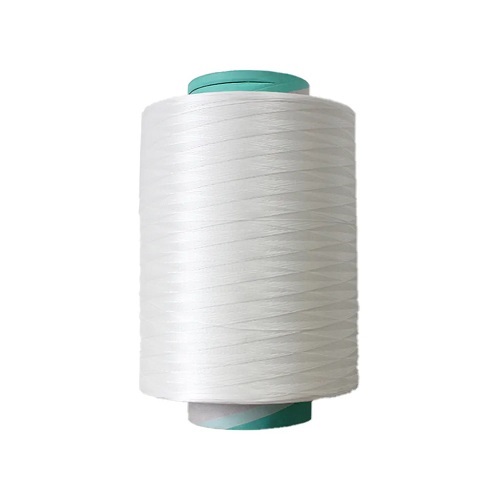Hose yarns: more efficient and environmentally friendly solutions for modern industry
Hose yarns
environmentally friendly Hose yarn
In recent years, hose yarn, as a new type of material, has gradually emerged in the industrial field. It is favored by more and more enterprises for its excellent performance and wide application fields. The emergence of hose yarn not only brings more efficient and environmentally friendly solutions to the industry, but also brings more possibilities for product design and manufacturing.

Hose yarn is a textile made of high-strength fiber materials, common materials include polyester fibers, polyamide fibers and aramid fibers. It is lightweight, high-strength, wear-resistant, corrosion-resistant, tensile-resistant, and high-temperature-resistant, making it suitable for a variety of industrial applications.
First of all, hose yarn plays an important role in the delivery system. Metal pipes are often used in traditional delivery systems, but they are heavy, expensive, cumbersome to install, and prone to rust and clogging. The lightweight nature of the hose yarn makes installation easier, while its high strength ensures the stability and durability of the delivery system. In addition, the hose yarn has good corrosion resistance and can adapt to various harsh working environments, providing a reliable guarantee for the operation of the conveying system.
Secondly, hose yarns are increasingly used in the automotive industry. In the automobile manufacturing process, hoses are often used to transport liquids or gases, but traditional rubber hoses are prone to aging and wear. Hose made of hose yarn not only has a longer service life, but also can withstand higher pressure, improving the reliability and safety of automotive systems. In addition, hose yarn can also be customized according to different needs to meet the requirements of automobile manufacturers for lightweight and high strength.
In addition, hose yarn is also widely used in construction, aerospace, marine engineering and other fields. In the field of construction, hose yarn can be used to make high-strength ropes for lifting, hoisting and other work. In the field of aerospace, hose yarn can be used to make control cables and connectors for aircraft, which is characterized by light weight and high strength. In the field of marine engineering, hose yarn can be used to make marine buoys, ship cables, etc., and has the characteristics of corrosion resistance and wear resistance.
However, the development of hose yarns still faces some challenges. The first is technical problems, such as the improvement and innovation of spinning, weaving and other processes. The second is the improvement of market awareness. Many companies still do not have a deep understanding of hose yarns, and need to strengthen publicity and promotion. Finally, there is the issue of cost. The production cost of hose yarn is relatively high, and it is necessary to further reduce costs and improve competitiveness.
In general, hose yarn, as a new type of material, has broad application prospects. With the continuous innovation of technology and the continuous expansion of the market, it is believed that hose yarn will play an increasingly important role in the industrial field, bringing more efficient and environmentally friendly solutions to modern industry.
 English
English Español
Español Português
Português русский
русский français
français 日本語
日本語 Deutsch
Deutsch Tiếng Việt
Tiếng Việt Italiano
Italiano Nederlands
Nederlands ไทย
ไทย Polski
Polski 한국어
한국어 Svenska
Svenska magyar
magyar Malay
Malay বাংলা
বাংলা Dansk
Dansk Suomi
Suomi हिन्दी
हिन्दी Pilipino
Pilipino Türk
Türk Gaeilge
Gaeilge عربى
عربى Indonesia
Indonesia norsk
norsk اردو
اردو čeština
čeština Ελληνικά
Ελληνικά Українська
Українська Javanese
Javanese فارسی
فارسی தமிழ்
தமிழ் తెలుగు
తెలుగు नेपाली
नेपाली Burmese
Burmese български
български ລາວ
ລາວ Latine
Latine Қазақ
Қазақ Euskal
Euskal Azərbaycan
Azərbaycan slovenský
slovenský Македонски
Македонски Lietuvos
Lietuvos Eesti Keel
Eesti Keel Română
Română Slovenski
Slovenski Српски
Српски Esperanto
Esperanto
Research and Development of High softness Polyester Yarn by Yuancheng New material Technology Co., Ltd.
Yicheng New material Technology (Changzhou) Co., Ltd. has long focused on the research and development, production and sales of automotive brake tubes, air conditioning tubes, cooling pipes and other industrial and civil hose polyester lines. After nearly 3 years of research and development and customer's continuous trial production and certification, the company has produced a more flexible polyester line of air-conditioning pipe, which greatly improves the qualified rate and performance of rubber hose without reducing the adhesive force.
Read MoreNotice of Call for Papers for the 8th China Rubber Industry Innovation and Development Technology Seminar 2026
In order to respond to the call for global green transformation and industrial innovation and upgrading, to deeply implement the concept of sustainable development.
Read MoreDipped Nylon Hose Yarn: Revolutionizing Industrial Hose Performance
In the modern industrial sector, durability, flexibility, and chemical resistance are critical requirements for high-performance hoses. Dipped Nylon Hose Yarn has emerged as a leading material to meet these demands, offering superior reinforcement for hoses used in a variety of industrial and commercial applications.
Read More